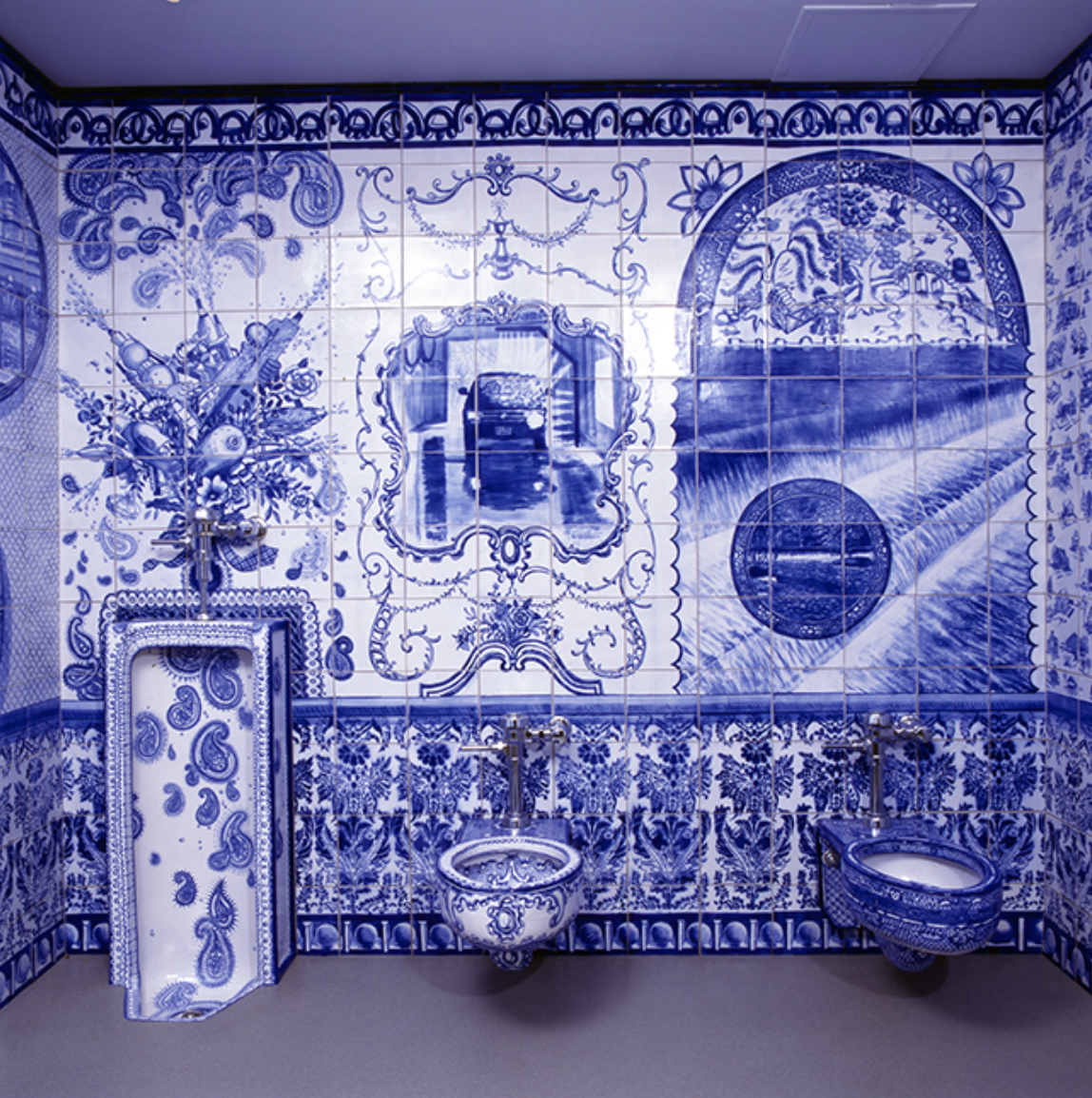navigating delftly
DELFT AND STAFFORDSHIRE TRADITIONS ARE SHOWING UP IN NEW WAYS. What we know as the Delft ceramic tradition was developed in the Netherlands around 1600. Like many "trends" the origin of its signature blue tone sits at an intersection of notable artist Da Savino who brought Majolica, a style of glazed pottery exported to Italy from Spain during its Renaissance, to Antwerp. This lineage paired with the import of millions of Chinese porcelien pieces during the Dutch "Golden Era", merged into a style we now refer to as "Delft". Staffordshire Blue, a specific category of The Staffordshire Potteries, was a by-product of the Industrial Revolution in England. Its history dates from 1780, when growing wealth of the professional and mercantile classes, coinciding population growth, created a market for colored earthenware. This tradition expresses in many formats: plates, vessels, water closets, and tiles to name a few.
One of the goals of this project, is to view trends through a larger arc of time if efforts to bring context, appreciation for craft and perhaps challenge the aesthetic churn of grabbing a few images from Pinterest and et voila, a brand! This is not meant to sound pretentious, there is a tender line between art and commerce that we all walk as we live and work in late-stage capitalism. Our intention comes from a love of the earth, an appreciation of the process, and the reminder that “Things of quality have no fear of time” — so if that’s the case, what’s the rush to burn through another round of styling trends?
An arts mecca, the John Michael Kohler Arts center, created by the Kohler family of porcelain fixtures fame, has filled their arts center in Wisconsin with artist-commissioned bathrooms - incredible. “Brooklyn artist Ann Agee was first invited to be an artist-in-residence in the Arts/Industry program in 1991. Trained as a painter at Yale and with an MFA from Cooper Union School of Art, Agee had no formal training in ceramics but began painting on clay through a desire to create three-dimensional paintings. For the washroom commissioned in 1998, Sheboygan Men’s Room, Agee chose to work with rich cobalt blue and white, deliberately reminiscent of Delft and Staffordshire ceramics. She glazed hundreds of tiles, the lavatories, urinal, toilets, and counter with intricate patterns inspired by historical motifs and with imagery devoted to the subject of water, particularly how it touches the lives of Sheboygan-area residents. All of the images in the washroom represent places in Sheboygan County–from a local car wash to views of Lake Michigan, a community swimming pool to supermarket shelves laden with bottled water, a water treatment plant to hundreds of Sheboygan homes with sprinklers and swimming pools.”2
MARKING TIME
Original Plate discovered in a London sewer
Puppets & Puppets SS21
Cover of Vanessa Rossetto album ‘you & i earth’
In the Museum of London there is a white earthenware plate bearing the inscription ‘You & I are Earth 1661’. Recovered in modern times from a London sewer, “the plate is made of earth; it has come out of the earth and confronts the viewer with their own earthliness”. As an object, this plate marks a date of origin, 1661. This was not uncommon in this era as clocks and calendars were not commonplace, so daily objects were used to mark time. This time travels to 2022, when fashion brand puppets & puppets recreated the plate in resin with an updated timestamp and affixed it to a purse for their SS21 runway show.
A fascinating medium shift, includes the work of Vanessa Rossetto, a composer, improviser & painter based in NYC. For her 2021 album, ‘you & i are earth’ , the date is removed from the plate yet the composition begins with the sound of a woman talking. As described on her website, this voice “recalls memories of being a young girl during the London Blitz fire bombings of World War II. She speaks calmly at first, with memories of the event slowly creeping up on her. These impressions soon become illustrated through Rossetto's own collage of mechanized cacophony. Eventually, they develop into her signature Feldman-esque flowing-out of strings.” The woman’s voice belongs to none other than Rossetto’s mother, and was recorded by Rossetto herself.
Francesca Cadimattio
In her work, DiMattio has consistently found ways to reframe that which we have often brushed off as decorative and, by implication, feminine, and re-introduces the viewer to these objects as the central point of focus within the spaces they occupy.7
This is an excerpt of an article from our current issue. Subscribe to read more on:
How objects can operate as memes in IRL
Objects can operate as vessels for time
How trends can sustain through a longer arc of time with context and craft
Challenge the aesthetic churn of modern times








